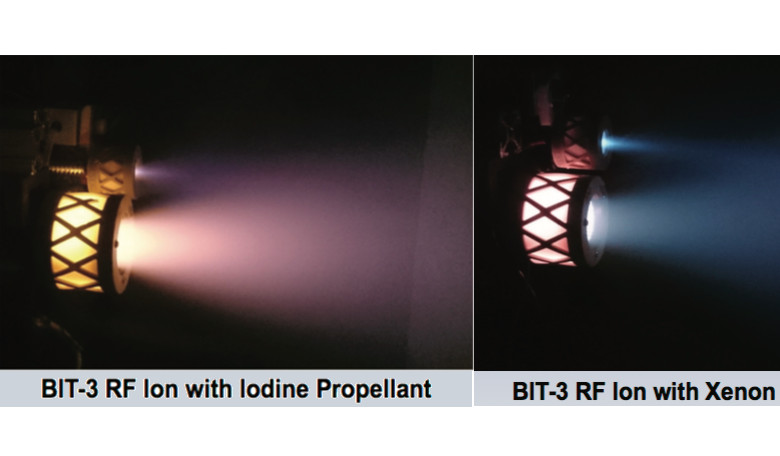A first of its kind iodine fuelled solar electric propulsion system designed by Busek Co. Inc, has completed two separate Critical Design Reviews (CDR) that once given the final sign-off, will enable an entirely new range of small spacecraft mission.
Electric propulsion (EP) systems have the appealing factor of providing exceptional propellant efficiency compared with traditional chemical propulsion, so Busek have been busy miniaturising EP systems to fit the growing CubeSat and small spacecraft market.
With over 25 years experience in the industry, Busek’s impressive portfolio of thruster products includes the Hall Thruster used on the TacSat-2 satellite, ammonia micro-resistojet, RF ion thruster, green monopropellant thruster and electrospray thrusters that were used on the LISA Pathfinder mission.
Currently in the spotlight is the ‘BIT-3’ – the world’s first iodine gridded ion thruster that according to Busek ‘features high performance and unprecedented efficiency for its size.’ It uses iodine stored as a dense solid, which means that high-pressure tanks are not required and an inductively-coupled plasma (ICP) discharge to eliminate the need for an internal hot cathode.
The thruster is targeted for use on two deep-space CubeSat missions that will hitch a ride on NASA’s Space Launch System; Morehead State University’s Lunar IceCube and Arizona State University’s LunaH-Map missions.
“The BIT-3 is critical technology that will allow small spacecraft and CubeSats to acquire high quality scientific results on interplanetary missions throughout the solar system. It truly enables the science of the LunaH-Map mission, mapping water-ice at the lunar south pole with a miniature neutron spectrometer,” said Prof. Craig Hardgrove, Arizona State University’s Principal Investigator for LunaH-Map.
Prof. Ben Malphrus, Principal Investigator of Morehead State University’s Lunar IceCube mission added, “this mission wouldn’t be possible without the BIT-3, and we’re proud to have Busek as a partner. It’s a game-changing technology for the whole CubeSat community.”











